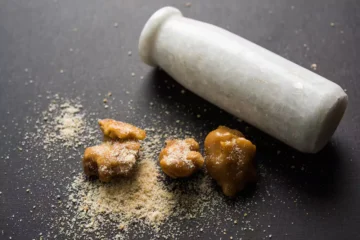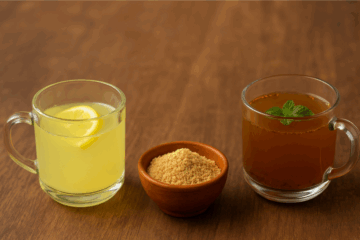Hing oil, a natural remedy derived from asafoetida, has long been used in Ayurvedic practices to relieve digestive issues. This blog will guide you on how to use Hing oil for gas and acidity, its application methods, safety precautions, and more.
How does Hing Oil work to relieve gas and acidity compared to traditional remedies?
Summary: Hing oil works as a natural carminative and anti-inflammatory agent, promoting smoother digestion and relieving gas faster than many traditional kitchen remedies.
Detailed Answer:
- Carminative properties: Hing oil relaxes intestinal muscles, which helps expel trapped gas naturally.
- Anti-inflammatory effects: It soothes inflamed stomach lining caused by acidity or indigestion.
- Faster absorption: Unlike powders or pastes, oil penetrates quickly when massaged topically, offering quicker relief.
- Less invasive: No ingestion needed—safe and easy for sensitive stomachs or individuals on medications.
- Traditional vs Hing Oil: Kitchen remedies like ajwain or ginger must be consumed, while Hing oil works externally without the risk of overpowering taste or reflux.
What’s the safest and most effective way to apply Hing Oil for abdominal discomfort?
Summary: The most effective way to use Hing oil for gas and acidity is to massage it gently around the navel area, optionally followed by a warm compress for deeper relief.
Detailed Answer:
- Topical application: Take 2–3 drops of Hing oil and mix with a carrier oil (like coconut or sesame).
- Massage technique: Gently rub the oil clockwise around the belly button and lower abdomen for 2–3 minutes.
- Warm compress: Apply a warm cloth or heating pad for 5–10 minutes post-massage to improve absorption.
- Don’t apply directly: Always dilute the essential oil to avoid skin irritation.
- Aromatherapy alternative: Add a few drops to a diffuser or warm water bowl for inhalation to ease nausea or bloating.
Can Hing Oil be used for children or elderly people with sensitive digestion?
Summary: Yes, Hing oil can be used safely for children and elderly people when diluted properly and applied topically under supervision.
Detailed Answer:
- Children under 5 years: Use 1 drop of Hing oil with 1 tablespoon of coconut oil. Gently massage the belly.
- Elderly use: Apply 2 drops with a carrier oil for mild massage after meals to aid digestion and reduce acidity.
- Avoid ingestion: Hing oil is meant for external use only, especially for sensitive age groups.
- Patch test: Always do a skin test before first use to avoid any allergic reactions.
- Parental guidance: Parents should avoid applying Hing oil near a child’s nose, eyes, or broken skin.
How often should I use Hing Oil for chronic bloating or acid reflux?
Summary: Hing oil can be used 1–2 times daily for chronic bloating or acid reflux, preferably after meals or at bedtime for best results.
Detailed Answer:
- Daily use: For chronic issues, use Hing oil twice daily—morning and night—for 7–10 days.
- Maintenance use: Once symptoms ease, use once daily or as needed to prevent flare-ups.
- Meal timing: Apply Hing oil 30 minutes after meals to relieve bloating effectively.
- Consistency is key: Regular use improves gut health by enhancing enzyme function and reducing gas buildup.
- Break periods: After 2–3 weeks of daily use, take a short break to allow natural digestive restoration.
Are there any side effects or precautions when using Hing Oil on the skin or near the stomach?
Summary: While generally safe, Hing oil may cause skin irritation or allergic reactions if used undiluted or excessively. Always follow dilution and usage guidelines.
Detailed Answer:
- Skin irritation: Avoid applying Hing oil directly without a carrier oil. Essential oils are potent and can burn sensitive skin.
- Allergic reactions: Do a patch test behind the ear or wrist before full application.
- Avoid sensitive areas: Don’t apply near eyes, nose, or open wounds.
- Pregnancy caution: Pregnant women should consult a doctor before use due to the strong aroma and stimulation effects.
- Storage tip: Store Hing oil in a cool, dark place away from direct sunlight to maintain its potency.
Hing Oil vs Other Remedies: A Comparison Table
| Remedy | Application Method | Time to Relief | Best For |
|---|---|---|---|
| Hing Oil | Topical massage | 5–15 minutes | Gas, bloating, acidity |
| Ajwain Seeds | Chewing or infusion | 30–45 minutes | Indigestion |
| Ginger Tea | Oral drink | 20–40 minutes | Nausea and bloating |
| Fennel Seeds | Chewed or soaked | 30–60 minutes | Gas and flatulence |
Conclusion: Why Hing Oil is a Smart Choice for Digestive Relief
Summary: Hing oil is a fast-acting, natural, and safe remedy for managing gas, acidity, and bloating—suitable for both adults and children when used correctly.
Detailed Conclusion:
- Natural origin: Made from pure asafoetida extracts, Hing oil is free from harmful chemicals or synthetic ingredients.
- Quick action: When applied topically, it gets absorbed quickly to provide relief within minutes.
- Family-friendly: Safe for kids and elders when diluted, making it a go-to home remedy for everyone.
- Portable & easy: Unlike powders or teas, Hing oil is easy to carry and use on the go.
- Backed by Ayurveda: It’s time-tested and aligns with ancient wellness traditions while offering modern convenience.
For those seeking fast, natural, and effective relief from digestive discomfort, Hing oil for gas and acidity is a solution worth embracing in your daily wellness routine.





